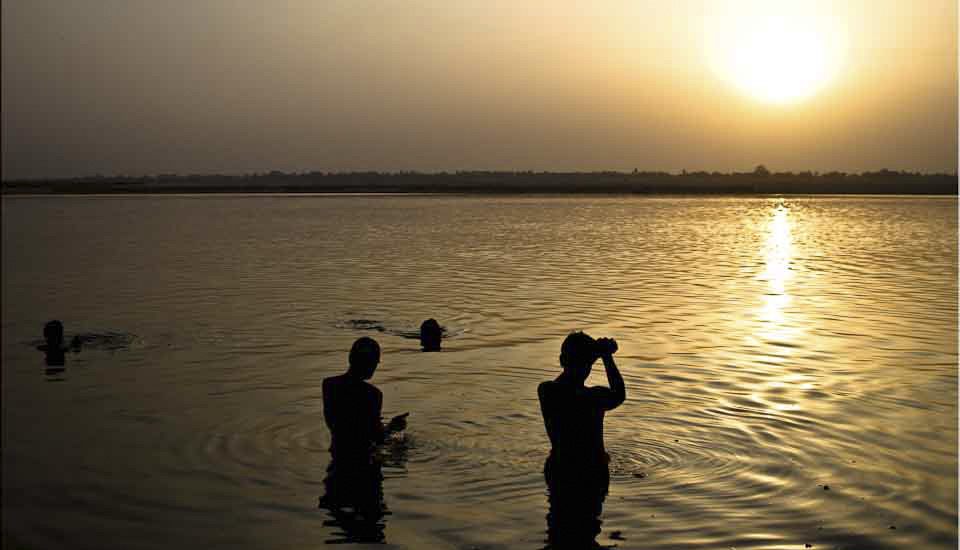.jpg)
Apples in an Orchard
With Lake Zurich in the background, the orchards around the Bächlihof Farm at Jona are a perfect spot for a Swiss National Day breakfast. (iPhone5)
August 1st is Swiss National Day, and thanks to William Tell, Switzerland’s independence will always be associated with apples.
Who doesn’t know the story of that legendary Swiss hero? That mountain man, that peasant from Bürglen in the canton of Uri, who resisted the commands of a tyrannical overlord, and was then forced to shoot an apple from the head of his son. By shooting straight and true with his crossbow, he succeeded – and became a symbol of the struggle for political and individual freedom against autocracy. In some stories, he used a second arrow to kill the tyrant – sometimes named as Baron Gessler.
What a pity it never happened!
The events are said to have occurred on 18 November 1307 in Altdorf (German for ‘old village’). The first fleeting reference to William Tell is in a 1470 manuscript, and in 1550, historian Aegidius Tschudi elaborates on the tale and credits it as the start of the fight for Swiss independence.
But, representatives of the three forest cantons of Schwyz, Altdorf and Uri actually signed the original Oath of Rütli at the beginning of August in 1291 (see: In Search of William Tell). Resisting the rule of the House of Habsburg (Hapsburg), the fiercely independent people who had settled in these narrow Alpine valleys managed to cooperate among themselves and build the foundations of the Swiss Confederation (see: Swiss National Day).
Meanwhile, the apple story has appeared in the folklore of a number of nations, and a remarkably similar story to the William Tell tale was told in Denmark in the 12th century. But, don’t argue about that with a Swiss! Although Tell might have not been an actual person, his persona is central to Swiss identity. To this day, the Swiss pride themselves as people who value their independence and are prepared to stand against oppression.
Some years ago, we were staying with friends in Rapperswil-Jona on Lake Zurich (see: Lake Zurich) when Swiss National Day rolled around. It was, of course, a Public Holiday, and an ‘adventure farm’ nearby was putting on a breakfast in honour of the day. So, we started our day surrounded by orchards of apples and other fruits, and sampling the glorious pastries made from them.
Then, like any good Swiss, we went for a walk. We meandered pleasantly past typical low-country villages, medieval churches and ancient pilgrim pathways. In the charming harbour of Rapperswil-Jona, we boarded a boat, and motored two hours across Lake Zurich, to the city of Zurich itself. There, we lunched at a popular traditional Swiss restaurant in the Old Town and wandered the ancient streets before returning home by train.
Everything seems so delightfully close and easy to get to in Europe!
.jpg)
Apple Orchard
Safe under the bird-netting at the Bächlihof Farm, row after row of apples are trained up poles.
.jpg)
Nashi Pears (Pyrus Pyrifolia)
Apples are not the only fruit trees growing on these extensive grounds.

Damson Plums (Pyrus Pyrifolia)
I love the colour of these beautiful plums. They are made into Slivovitz (plum brandy) all over Europe.

Apples
There are several apple types growing here: they all look delicious.

Pears

Schopf
The wooden function buildings at the Bächlihof Swiss Farmhouse are quite elegant in their simplicity.

Cakes and Pastries
Inside Heugade, some of that fruit has been baked into wonderful pastries that are part of our National Day buffet breakfast.

A Girl and a Pony
We might be only 40km from Zurich, but the walkways around Lake Zurich have a very rural/small-town feel.

House in a Field
Busskirch is a small but historic village on the northern shore of the lake, within the local municipality of Rapperswil-Jona.

St. Martin Busskirch
The early medieval parish church of St. Martin is popular for weddings because of its pastoral charm and idyllic location on the lake.

St. Joseph
The largest religious group in Switzerland is Roman Catholic, and St. Martin Busskirch is one of the oldest churches here.

Tidy Graveyard
The small Busskirch cemetery rests over the remains of a 1st to 4th century Roman building. Swiss graveyards are strictly controlled and immaculately maintained. To deal with lack of space, burial plots are on a 25-year lease. After that time, plots are emptied and readied for the next burial.

Pink Japanese Anemone (Anemone Hupehensis)
I associate Switzerland with flowers: hedges, window boxes and garden beds – everywhere.

Family Outing
A family of mute swans (Cygnus olor) wander through grass along the lake’s edge.

Sculpture in the Garden
Our lake-side walk takes us past the University of Applied Sciences Rapperswil Campus (Fachhochschule Ostschweiz Campus RJ), where some beautiful, large sculptures rise out of the gardens of grass and sunflowers.

Rusty Curves
I love the texture of the rusty metal, and the luscious curved lines.

Holzbrücke Rapperswil-Hurden
This is the narrowest spot on the lake, and two bridges cross from here. This wooden pedestrian bridge between the Rapperswil and the village of Hurden stands in the place of bridges dating back to time immemorial. Prehistoric timber piles discovered on the other side of the lake date back to 1523 BC.

Under the Bridge
The other lake crossing here is more modern in conception: the Seedamm, is part bridge and part artificial causeway.

Waterfront
We, however, are crossing the lake the long way: by boat. On the harbour, we get a lovely view of the ships in the port, the beautiful old buildings dating back to the 1200s, and the castle at the top of the hill that we walked around on another day (see: The Roses of Rapperswil).

Rapperswil Waterfront
On the water, we get a whole different view of that wonderful medieval architecture that gives the little city its character. Hotel Schwanen is in a building dating to 1233. The Curti House to the left, dates back to the 16th century, with mosaics and paintings added in 1894.

Tourist Boats on Lake Zurich
We are not the only boat on the lake.

Cottage on Lake Zurich
Our boat makes a short stop on the opposite side of the lake …

Woman on the Waterfront
… and passes a number of other piers …

Limmat River
… before cruising into the river outfall at the southern part of the city of Zurich.

Limmat River and the Waterfront
The church clock of St. Peter is the largest tower clock face in Europe, with bells dating to 1880. Consecrated in 1706, St. Peter was the first church in Zurich built under Protestant rule.

The Grossmünster and the Hans Waldmann Statue
Die Altstadt (“the old town”) of Zürich dates before 1893, and every brick has a story to tell. Foreground here is the 1937 equestrian monument to Hans Waldmann (1435 – 1489). He was a Swiss military leader and mayor of Zurich. In the background, we see the Romanesque-style Grossmünster, a Protestant church built between 1100 and 1220.

Dolce&Gabbana
The historic city houses some very up-market shops!

Freunde für Immer – Friends Forever
All over Europe, bridges strain under the weight of locks put in place by friends and lovers.

‘Guardian Angel’
In the Zurich railway station, a piece by French-American sculptor Niki de Saint Phalle watches over us.
 Back on the balcony at the home of our hosts in Rapperswil-Jona, nature treated us to a late afternoon rainbow over the lake, and the municipality treated us to fire works after dark.
Back on the balcony at the home of our hosts in Rapperswil-Jona, nature treated us to a late afternoon rainbow over the lake, and the municipality treated us to fire works after dark.
A full – and very Swiss – National Day indeed!
Pictures: 01August2014

































.png)

